-
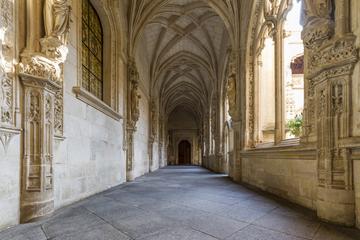 Monastery of San Juan de los Reyes
Monastery of San Juan de los Reyes Once upon a time, Spain’s famous Catholic Monarchs had grand plans for Toledo to be their final resting place. As such, and in commemoration of the victory of the Battle of Toro, they began building the Monastery of San Juan de los Reyes. Though ultimately the Ki
Monastery of San Juan de los Reyes
Monastery of San Juan de los Reyes Once upon a time, Spain’s famous Catholic Monarchs had grand plans for Toledo to be their final resting place. As such, and in commemoration of the victory of the Battle of Toro, they began building the Monastery of San Juan de los Reyes. Though ultimately the Ki
-
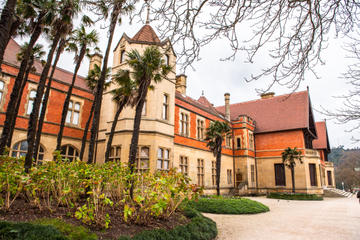 Miramar Palace
Miramar Palace With formal gardens that tumble down to the beach edge at Ondarreta, the Miramar Palace was once the retreat of Queen Marie Christine Habsburg, the wealthy widow of King Alphonse XII of the Spanish ruling royal family; she was responsible for putting San Sebastian on the map as a po
Miramar Palace
Miramar Palace With formal gardens that tumble down to the beach edge at Ondarreta, the Miramar Palace was once the retreat of Queen Marie Christine Habsburg, the wealthy widow of King Alphonse XII of the Spanish ruling royal family; she was responsible for putting San Sebastian on the map as a po
-
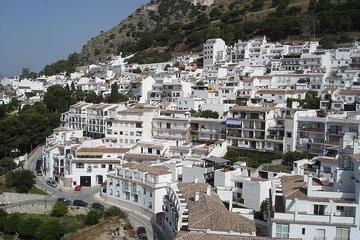 Mijas
Mijas Mijas is the typical idyllic Andalusian village (or at least Mijas Pueblos, the old part of town, is). White-washed houses cluster against the side of a mountain range with a view of the Mediterranean. Its all white and blue and sparkling fresh. If you like golf, this place is for you - ther
Mijas
Mijas Mijas is the typical idyllic Andalusian village (or at least Mijas Pueblos, the old part of town, is). White-washed houses cluster against the side of a mountain range with a view of the Mediterranean. Its all white and blue and sparkling fresh. If you like golf, this place is for you - ther
-
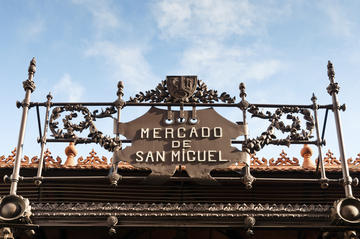 Mercado de San Miguel
Mercado de San Miguel While in the heart of Madrid’s tourist center, get closer to the culinary side of the Spanish capital and its history by visiting Mercado de San Miguel. Located just steps away from the city’s Plaza Mayor, or main square, it’s the perfect spot to take in some culture while yo
Mercado de San Miguel
Mercado de San Miguel While in the heart of Madrid’s tourist center, get closer to the culinary side of the Spanish capital and its history by visiting Mercado de San Miguel. Located just steps away from the city’s Plaza Mayor, or main square, it’s the perfect spot to take in some culture while yo
-
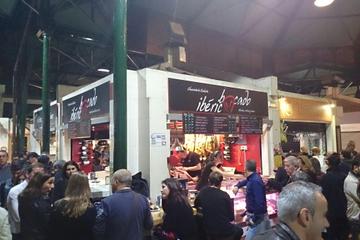 Mercado del Puerto
Mercado del Puerto Often considered to be the finest example of iron architecture in Gran Canada, the Mercado del Puerto is one of the main food markets in the city of Las Palmas. Its modernist, strikingly stern appearance is due to its contrasting structure, which clashes against the typically ea
Mercado del Puerto
Mercado del Puerto Often considered to be the finest example of iron architecture in Gran Canada, the Mercado del Puerto is one of the main food markets in the city of Las Palmas. Its modernist, strikingly stern appearance is due to its contrasting structure, which clashes against the typically ea
-
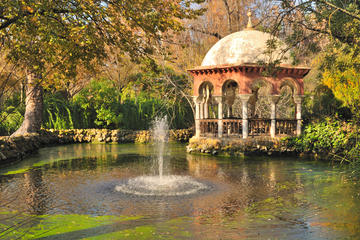 Maria Luisa Park
Maria Luisa Park South of Sevilles main old quarter and extending along the Guadalquivir River, youll stumble upon the citys main green getaway, Maria Luisa Park. Once primarily the land of the Palace of San Telmo (now home to Andalusia’s president), this patch of paradise was donated to the publi
Maria Luisa Park
Maria Luisa Park South of Sevilles main old quarter and extending along the Guadalquivir River, youll stumble upon the citys main green getaway, Maria Luisa Park. Once primarily the land of the Palace of San Telmo (now home to Andalusia’s president), this patch of paradise was donated to the publi
-
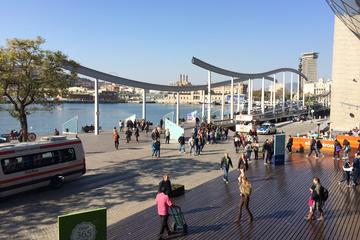 Maremagnum
Maremagnum Framed by its wave-shaped walkway leading from the city out onto the water, Maremagnum is recognizable from many sections of the Barcelona beaches. The shopping center is home to many big name brands, as well as local restaurants and a cinema. Two floors of shops range from home goods a
Maremagnum
Maremagnum Framed by its wave-shaped walkway leading from the city out onto the water, Maremagnum is recognizable from many sections of the Barcelona beaches. The shopping center is home to many big name brands, as well as local restaurants and a cinema. Two floors of shops range from home goods a
-
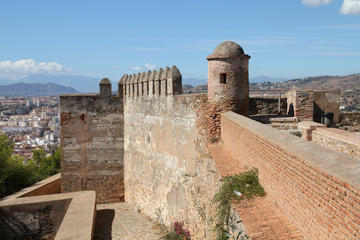 Malaga Alcazaba
Malaga Alcazaba If you’re in Malaga, chances are you’ve not missed the town’s citadel towering in the center of the city. Known as the Alcazaba de Malaga, and built around the middle of the 11th century to act as a palace to the region’s governors, today the Alcazaba receives visitors year-round a
Malaga Alcazaba
Malaga Alcazaba If you’re in Malaga, chances are you’ve not missed the town’s citadel towering in the center of the city. Known as the Alcazaba de Malaga, and built around the middle of the 11th century to act as a palace to the region’s governors, today the Alcazaba receives visitors year-round a
-
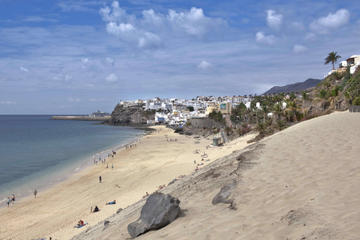 Majanicho
Majanicho When it comes to remoteness and volcanic landscapes, the Canary Islands are good at making you feel like you’re a world away. And the barely-a-village, bayside Majanicho only adds to that magic. It will have you feeling like you’re on an expedition on the face of the moon – albeit one t
Majanicho
Majanicho When it comes to remoteness and volcanic landscapes, the Canary Islands are good at making you feel like you’re a world away. And the barely-a-village, bayside Majanicho only adds to that magic. It will have you feeling like you’re on an expedition on the face of the moon – albeit one t
-
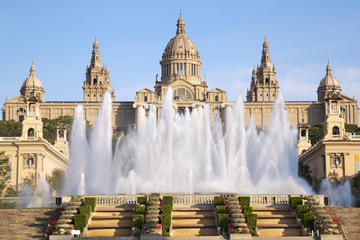 Magic Fountain
Magic Fountain One of Barcelona’s most dazzling attractions, the Magic Fountain, or Font Montjuic, was built in 1929 for the city’s World Exhibition, taking 3000 people almost a year to complete, and later restored during the 1992 Olympic Games. Taking center stage in Plaça Espanya at the foot of
Magic Fountain
Magic Fountain One of Barcelona’s most dazzling attractions, the Magic Fountain, or Font Montjuic, was built in 1929 for the city’s World Exhibition, taking 3000 people almost a year to complete, and later restored during the 1992 Olympic Games. Taking center stage in Plaça Espanya at the foot of
-
 Madrid Wax Museum (Museo de Cera)
Madrid Wax Museum (Museo de Cera) With two levels of more than 400 wax statues of historic figures, the Madrid Wax Museum is an excellent introduction to periods of history and those who impacted the world at that time. An incredible range of wax figures from all eras is on display, from Napoleon,
Madrid Wax Museum (Museo de Cera)
Madrid Wax Museum (Museo de Cera) With two levels of more than 400 wax statues of historic figures, the Madrid Wax Museum is an excellent introduction to periods of history and those who impacted the world at that time. An incredible range of wax figures from all eras is on display, from Napoleon,
-
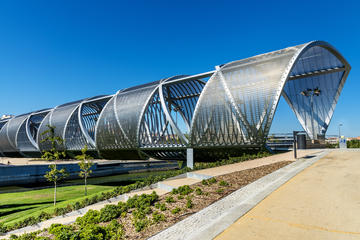 Madrid Rio
Madrid Rio Madrid Rio is the name given to the 820-hectare area running along the banks of the Manzanares river in Madrid. Unveiled in 2008, 1.5 km from Puerta del Sol, Madrid Rio runs alongside the river for 6 km and connects existing green areas like the Casa del Campo with the city center. As y
Madrid Rio
Madrid Rio Madrid Rio is the name given to the 820-hectare area running along the banks of the Manzanares river in Madrid. Unveiled in 2008, 1.5 km from Puerta del Sol, Madrid Rio runs alongside the river for 6 km and connects existing green areas like the Casa del Campo with the city center. As y
-
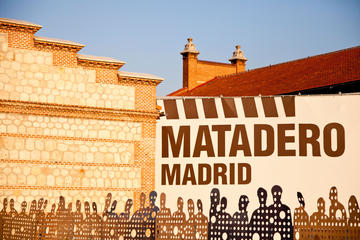 Madrid Matadero
Madrid Matadero Once a large slaughterhouse and now a center for the arts, the Madrid Matadero was one of the most important architectural transformations for the city in the 20th century. It operates as a living laboratory for cross-disciplinary artistic forms, pushing the boundary of culture and
Madrid Matadero
Madrid Matadero Once a large slaughterhouse and now a center for the arts, the Madrid Matadero was one of the most important architectural transformations for the city in the 20th century. It operates as a living laboratory for cross-disciplinary artistic forms, pushing the boundary of culture and
-
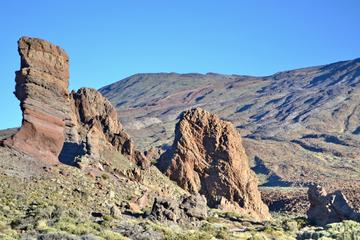 Los Roques de García
Los Roques de García A cluster of uniquely shaped rocks lying in the shadows of the notoriously volatile Teide volcano, Los Roques de García are among the top attractions of Tenerife’s UNESCO-listed Teide National Park. Formed by years of ancient volcanic activity, the pyroclastic rocks are best
Los Roques de García
Los Roques de García A cluster of uniquely shaped rocks lying in the shadows of the notoriously volatile Teide volcano, Los Roques de García are among the top attractions of Tenerife’s UNESCO-listed Teide National Park. Formed by years of ancient volcanic activity, the pyroclastic rocks are best
-
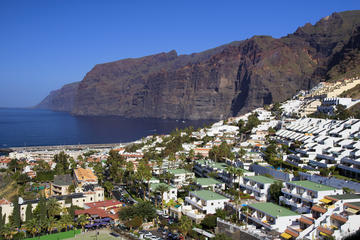 Los Gigantes
Los Gigantes Though El Teide may be Tenerife’s most popular sky-high sight — and rightly so — it’s not the only one you’ll want to check out while on the island. If you head to the western coastline, you won’t want to miss gaping at the massive cliff-lined coastline home to Los Gigantes. “The Gian
Los Gigantes
Los Gigantes Though El Teide may be Tenerife’s most popular sky-high sight — and rightly so — it’s not the only one you’ll want to check out while on the island. If you head to the western coastline, you won’t want to miss gaping at the massive cliff-lined coastline home to Los Gigantes. “The Gian
-
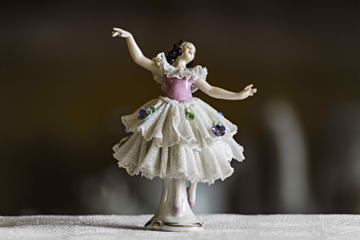 Lladró Museum
Lladró Museum Perhaps you may be familiar with Lladró and its porcelain figurines. The fragile pieces typically depict people, and especially women, who are often pensive or frozen in artistic motion. The internationally famous works of art originate from the Valencian suburb of Tavernes Blanques,
Lladró Museum
Lladró Museum Perhaps you may be familiar with Lladró and its porcelain figurines. The fragile pieces typically depict people, and especially women, who are often pensive or frozen in artistic motion. The internationally famous works of art originate from the Valencian suburb of Tavernes Blanques,
-
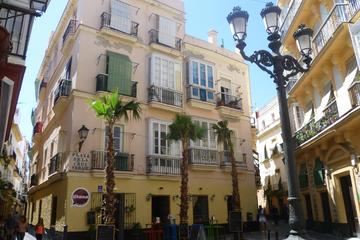 La Viña
La Viña Get to know the essence of Cadiz during a wander through one of its most beloved old quarter neighborhoods, La Viña. The name, which means “the vine,” was inspired by its previous life when it served as land for vineyards. That was, of course, before buildings cropped up to accommodate the
La Viña
La Viña Get to know the essence of Cadiz during a wander through one of its most beloved old quarter neighborhoods, La Viña. The name, which means “the vine,” was inspired by its previous life when it served as land for vineyards. That was, of course, before buildings cropped up to accommodate the
-
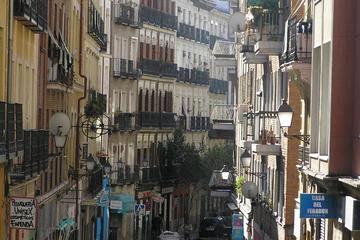 Lavapiés
Lavapiés Lavapiés is an area of Madrid outside of the old city walls that was once the Jewish and Moorish neighborhood. In 1492, the residents of the neighborhood were forced to either convert or leave. The neighborhood then became a working class area for hundreds of years and eventually fell int
Lavapiés
Lavapiés Lavapiés is an area of Madrid outside of the old city walls that was once the Jewish and Moorish neighborhood. In 1492, the residents of the neighborhood were forced to either convert or leave. The neighborhood then became a working class area for hundreds of years and eventually fell int
-
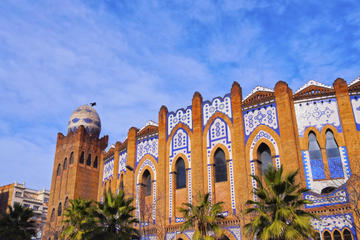 La Monumental Bullring
La Monumental Bullring Barcelona’s main bullring was built in the smart Eixample district of the city with a flamboyant Neo-Mudéjar and Byzantine façade by Catalan architect Domènec Sugrañes i Gras, a disciple of Gaudí. Embellished with typical Iberian white-and-blue tiles and towers topped with o
La Monumental Bullring
La Monumental Bullring Barcelona’s main bullring was built in the smart Eixample district of the city with a flamboyant Neo-Mudéjar and Byzantine façade by Catalan architect Domènec Sugrañes i Gras, a disciple of Gaudí. Embellished with typical Iberian white-and-blue tiles and towers topped with o
-
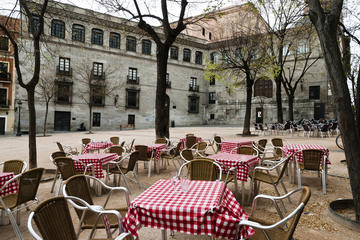 La Latina
La Latina Located in the center of the city, La Latina is one of the most authentic neighborhoods in Madrid. Medieval roads wind around Plaza de la Cebada and Plaza Paja, and this district was once inside of Madrids first city walls. Some remains of the walls can still be seen. The area was once o
La Latina
La Latina Located in the center of the city, La Latina is one of the most authentic neighborhoods in Madrid. Medieval roads wind around Plaza de la Cebada and Plaza Paja, and this district was once inside of Madrids first city walls. Some remains of the walls can still be seen. The area was once o
Total
2732 -travel
FirstPage PreviousPage NextPage LastPage CurrentPage:
6/137 20-travel/Page GoTo Page:
 Monastery of San Juan de los Reyes
Monastery of San Juan de los Reyes Once upon a time, Spain’s famous Catholic Monarchs had grand plans for Toledo to be their final resting place. As such, and in commemoration of the victory of the Battle of Toro, they began building the Monastery of San Juan de los Reyes. Though ultimately the Ki
Monastery of San Juan de los Reyes
Monastery of San Juan de los Reyes Once upon a time, Spain’s famous Catholic Monarchs had grand plans for Toledo to be their final resting place. As such, and in commemoration of the victory of the Battle of Toro, they began building the Monastery of San Juan de los Reyes. Though ultimately the Ki
 Miramar Palace
Miramar Palace With formal gardens that tumble down to the beach edge at Ondarreta, the Miramar Palace was once the retreat of Queen Marie Christine Habsburg, the wealthy widow of King Alphonse XII of the Spanish ruling royal family; she was responsible for putting San Sebastian on the map as a po
Miramar Palace
Miramar Palace With formal gardens that tumble down to the beach edge at Ondarreta, the Miramar Palace was once the retreat of Queen Marie Christine Habsburg, the wealthy widow of King Alphonse XII of the Spanish ruling royal family; she was responsible for putting San Sebastian on the map as a po
 Mijas
Mijas Mijas is the typical idyllic Andalusian village (or at least Mijas Pueblos, the old part of town, is). White-washed houses cluster against the side of a mountain range with a view of the Mediterranean. Its all white and blue and sparkling fresh. If you like golf, this place is for you - ther
Mijas
Mijas Mijas is the typical idyllic Andalusian village (or at least Mijas Pueblos, the old part of town, is). White-washed houses cluster against the side of a mountain range with a view of the Mediterranean. Its all white and blue and sparkling fresh. If you like golf, this place is for you - ther
 Mercado de San Miguel
Mercado de San Miguel While in the heart of Madrid’s tourist center, get closer to the culinary side of the Spanish capital and its history by visiting Mercado de San Miguel. Located just steps away from the city’s Plaza Mayor, or main square, it’s the perfect spot to take in some culture while yo
Mercado de San Miguel
Mercado de San Miguel While in the heart of Madrid’s tourist center, get closer to the culinary side of the Spanish capital and its history by visiting Mercado de San Miguel. Located just steps away from the city’s Plaza Mayor, or main square, it’s the perfect spot to take in some culture while yo
 Mercado del Puerto
Mercado del Puerto Often considered to be the finest example of iron architecture in Gran Canada, the Mercado del Puerto is one of the main food markets in the city of Las Palmas. Its modernist, strikingly stern appearance is due to its contrasting structure, which clashes against the typically ea
Mercado del Puerto
Mercado del Puerto Often considered to be the finest example of iron architecture in Gran Canada, the Mercado del Puerto is one of the main food markets in the city of Las Palmas. Its modernist, strikingly stern appearance is due to its contrasting structure, which clashes against the typically ea
 Maria Luisa Park
Maria Luisa Park South of Sevilles main old quarter and extending along the Guadalquivir River, youll stumble upon the citys main green getaway, Maria Luisa Park. Once primarily the land of the Palace of San Telmo (now home to Andalusia’s president), this patch of paradise was donated to the publi
Maria Luisa Park
Maria Luisa Park South of Sevilles main old quarter and extending along the Guadalquivir River, youll stumble upon the citys main green getaway, Maria Luisa Park. Once primarily the land of the Palace of San Telmo (now home to Andalusia’s president), this patch of paradise was donated to the publi
 Maremagnum
Maremagnum Framed by its wave-shaped walkway leading from the city out onto the water, Maremagnum is recognizable from many sections of the Barcelona beaches. The shopping center is home to many big name brands, as well as local restaurants and a cinema. Two floors of shops range from home goods a
Maremagnum
Maremagnum Framed by its wave-shaped walkway leading from the city out onto the water, Maremagnum is recognizable from many sections of the Barcelona beaches. The shopping center is home to many big name brands, as well as local restaurants and a cinema. Two floors of shops range from home goods a
 Malaga Alcazaba
Malaga Alcazaba If you’re in Malaga, chances are you’ve not missed the town’s citadel towering in the center of the city. Known as the Alcazaba de Malaga, and built around the middle of the 11th century to act as a palace to the region’s governors, today the Alcazaba receives visitors year-round a
Malaga Alcazaba
Malaga Alcazaba If you’re in Malaga, chances are you’ve not missed the town’s citadel towering in the center of the city. Known as the Alcazaba de Malaga, and built around the middle of the 11th century to act as a palace to the region’s governors, today the Alcazaba receives visitors year-round a
 Majanicho
Majanicho When it comes to remoteness and volcanic landscapes, the Canary Islands are good at making you feel like you’re a world away. And the barely-a-village, bayside Majanicho only adds to that magic. It will have you feeling like you’re on an expedition on the face of the moon – albeit one t
Majanicho
Majanicho When it comes to remoteness and volcanic landscapes, the Canary Islands are good at making you feel like you’re a world away. And the barely-a-village, bayside Majanicho only adds to that magic. It will have you feeling like you’re on an expedition on the face of the moon – albeit one t
 Magic Fountain
Magic Fountain One of Barcelona’s most dazzling attractions, the Magic Fountain, or Font Montjuic, was built in 1929 for the city’s World Exhibition, taking 3000 people almost a year to complete, and later restored during the 1992 Olympic Games. Taking center stage in Plaça Espanya at the foot of
Magic Fountain
Magic Fountain One of Barcelona’s most dazzling attractions, the Magic Fountain, or Font Montjuic, was built in 1929 for the city’s World Exhibition, taking 3000 people almost a year to complete, and later restored during the 1992 Olympic Games. Taking center stage in Plaça Espanya at the foot of
 Madrid Wax Museum (Museo de Cera)
Madrid Wax Museum (Museo de Cera) With two levels of more than 400 wax statues of historic figures, the Madrid Wax Museum is an excellent introduction to periods of history and those who impacted the world at that time. An incredible range of wax figures from all eras is on display, from Napoleon,
Madrid Wax Museum (Museo de Cera)
Madrid Wax Museum (Museo de Cera) With two levels of more than 400 wax statues of historic figures, the Madrid Wax Museum is an excellent introduction to periods of history and those who impacted the world at that time. An incredible range of wax figures from all eras is on display, from Napoleon,
 Madrid Rio
Madrid Rio Madrid Rio is the name given to the 820-hectare area running along the banks of the Manzanares river in Madrid. Unveiled in 2008, 1.5 km from Puerta del Sol, Madrid Rio runs alongside the river for 6 km and connects existing green areas like the Casa del Campo with the city center. As y
Madrid Rio
Madrid Rio Madrid Rio is the name given to the 820-hectare area running along the banks of the Manzanares river in Madrid. Unveiled in 2008, 1.5 km from Puerta del Sol, Madrid Rio runs alongside the river for 6 km and connects existing green areas like the Casa del Campo with the city center. As y
 Madrid Matadero
Madrid Matadero Once a large slaughterhouse and now a center for the arts, the Madrid Matadero was one of the most important architectural transformations for the city in the 20th century. It operates as a living laboratory for cross-disciplinary artistic forms, pushing the boundary of culture and
Madrid Matadero
Madrid Matadero Once a large slaughterhouse and now a center for the arts, the Madrid Matadero was one of the most important architectural transformations for the city in the 20th century. It operates as a living laboratory for cross-disciplinary artistic forms, pushing the boundary of culture and
 Los Roques de García
Los Roques de García A cluster of uniquely shaped rocks lying in the shadows of the notoriously volatile Teide volcano, Los Roques de García are among the top attractions of Tenerife’s UNESCO-listed Teide National Park. Formed by years of ancient volcanic activity, the pyroclastic rocks are best
Los Roques de García
Los Roques de García A cluster of uniquely shaped rocks lying in the shadows of the notoriously volatile Teide volcano, Los Roques de García are among the top attractions of Tenerife’s UNESCO-listed Teide National Park. Formed by years of ancient volcanic activity, the pyroclastic rocks are best
 Los Gigantes
Los Gigantes Though El Teide may be Tenerife’s most popular sky-high sight — and rightly so — it’s not the only one you’ll want to check out while on the island. If you head to the western coastline, you won’t want to miss gaping at the massive cliff-lined coastline home to Los Gigantes. “The Gian
Los Gigantes
Los Gigantes Though El Teide may be Tenerife’s most popular sky-high sight — and rightly so — it’s not the only one you’ll want to check out while on the island. If you head to the western coastline, you won’t want to miss gaping at the massive cliff-lined coastline home to Los Gigantes. “The Gian
 Lladró Museum
Lladró Museum Perhaps you may be familiar with Lladró and its porcelain figurines. The fragile pieces typically depict people, and especially women, who are often pensive or frozen in artistic motion. The internationally famous works of art originate from the Valencian suburb of Tavernes Blanques,
Lladró Museum
Lladró Museum Perhaps you may be familiar with Lladró and its porcelain figurines. The fragile pieces typically depict people, and especially women, who are often pensive or frozen in artistic motion. The internationally famous works of art originate from the Valencian suburb of Tavernes Blanques,
 La Viña
La Viña Get to know the essence of Cadiz during a wander through one of its most beloved old quarter neighborhoods, La Viña. The name, which means “the vine,” was inspired by its previous life when it served as land for vineyards. That was, of course, before buildings cropped up to accommodate the
La Viña
La Viña Get to know the essence of Cadiz during a wander through one of its most beloved old quarter neighborhoods, La Viña. The name, which means “the vine,” was inspired by its previous life when it served as land for vineyards. That was, of course, before buildings cropped up to accommodate the
 Lavapiés
Lavapiés Lavapiés is an area of Madrid outside of the old city walls that was once the Jewish and Moorish neighborhood. In 1492, the residents of the neighborhood were forced to either convert or leave. The neighborhood then became a working class area for hundreds of years and eventually fell int
Lavapiés
Lavapiés Lavapiés is an area of Madrid outside of the old city walls that was once the Jewish and Moorish neighborhood. In 1492, the residents of the neighborhood were forced to either convert or leave. The neighborhood then became a working class area for hundreds of years and eventually fell int
 La Monumental Bullring
La Monumental Bullring Barcelona’s main bullring was built in the smart Eixample district of the city with a flamboyant Neo-Mudéjar and Byzantine façade by Catalan architect Domènec Sugrañes i Gras, a disciple of Gaudí. Embellished with typical Iberian white-and-blue tiles and towers topped with o
La Monumental Bullring
La Monumental Bullring Barcelona’s main bullring was built in the smart Eixample district of the city with a flamboyant Neo-Mudéjar and Byzantine façade by Catalan architect Domènec Sugrañes i Gras, a disciple of Gaudí. Embellished with typical Iberian white-and-blue tiles and towers topped with o
 La Latina
La Latina Located in the center of the city, La Latina is one of the most authentic neighborhoods in Madrid. Medieval roads wind around Plaza de la Cebada and Plaza Paja, and this district was once inside of Madrids first city walls. Some remains of the walls can still be seen. The area was once o
La Latina
La Latina Located in the center of the city, La Latina is one of the most authentic neighborhoods in Madrid. Medieval roads wind around Plaza de la Cebada and Plaza Paja, and this district was once inside of Madrids first city walls. Some remains of the walls can still be seen. The area was once o